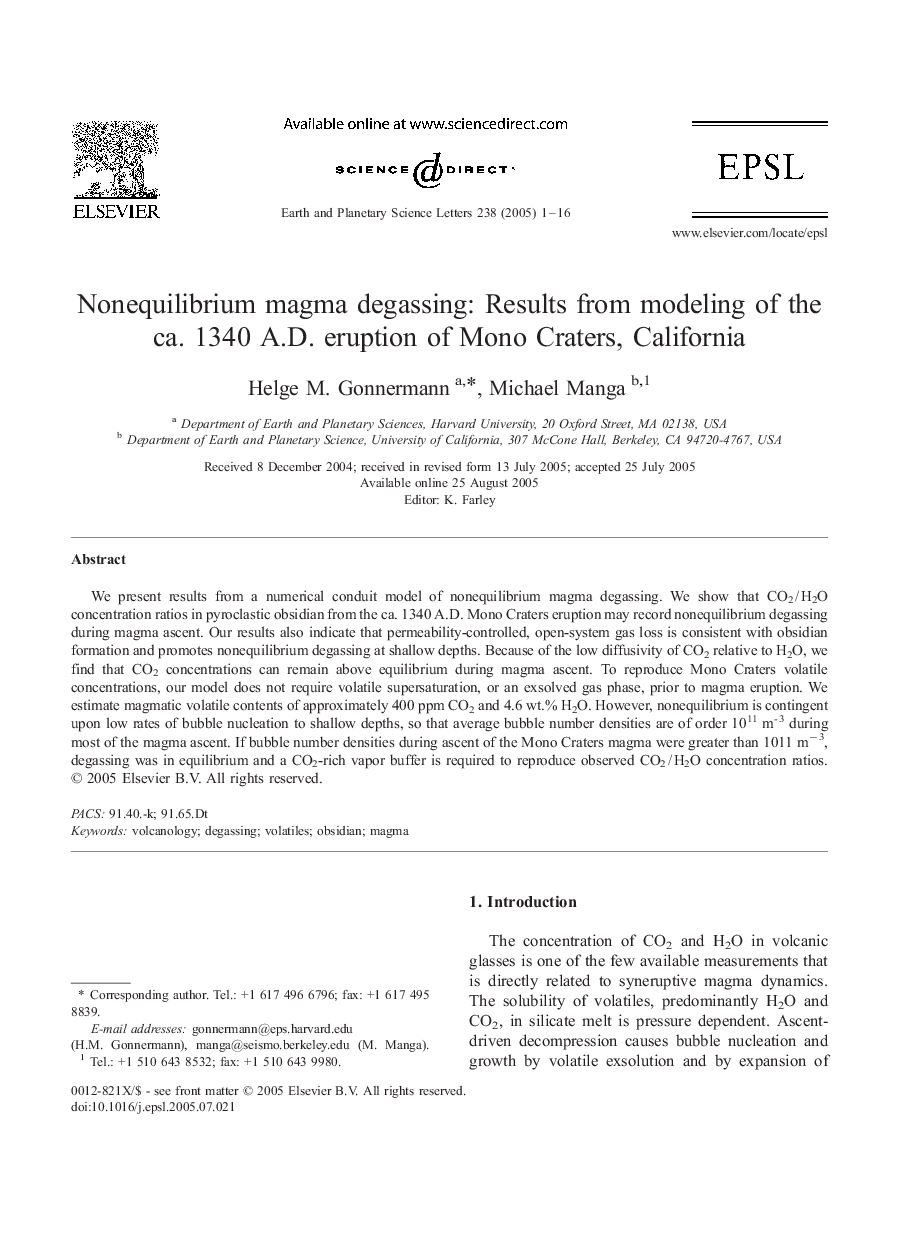| Article ID | Journal | Published Year | Pages | File Type |
|---|---|---|---|---|
| 9522083 | Earth and Planetary Science Letters | 2005 | 16 Pages |
Abstract
We present results from a numerical conduit model of nonequilibrium magma degassing. We show that CO2 / H2O concentration ratios in pyroclastic obsidian from the ca. 1340 A.D. Mono Craters eruption may record nonequilibrium degassing during magma ascent. Our results also indicate that permeability-controlled, open-system gas loss is consistent with obsidian formation and promotes nonequilibrium degassing at shallow depths. Because of the low diffusivity of CO2 relative to H2O, we find that CO2 concentrations can remain above equilibrium during magma ascent. To reproduce Mono Craters volatile concentrations, our model does not require volatile supersaturation, or an exsolved gas phase, prior to magma eruption. We estimate magmatic volatile contents of approximately 400 ppm CO2 and 4.6 wt.% H2O. However, nonequilibrium is contingent upon low rates of bubble nucleation to shallow depths, so that average bubble number densities are of order 1011 mâ 3 during most of the magma ascent. If bubble number densities during ascent of the Mono Craters magma were greater than 1011 mâ 3, degassing was in equilibrium and a CO2-rich vapor buffer is required to reproduce observed CO2 / H2O concentration ratios.
Related Topics
Physical Sciences and Engineering
Earth and Planetary Sciences
Earth and Planetary Sciences (General)
Authors
Helge M. Gonnermann, Michael Manga,
